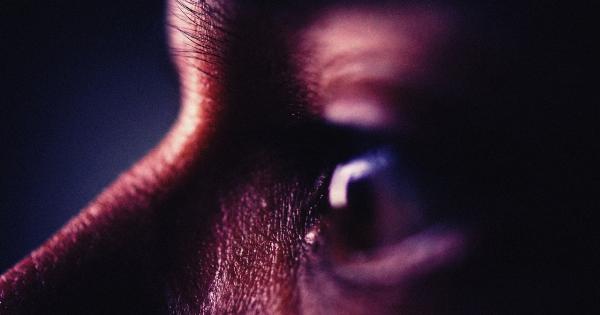We often underestimate the power of our sense of smell. It has the ability to transport us to distant memories, trigger powerful emotions, and even warn us of potential hazards.
But did you know that our sense of smell can also be a valuable tool in solving crimes? In this article, we delve into the fascinating world of scent and explore how it is being harnessed to crack some of the most challenging cases.
The Science of Smell
Before we dive into the role of smell in crime-solving, it’s important to understand the science behind our olfactory system. Our sense of smell is complex and intricate, involving various parts of the brain and a multitude of sensory receptors.
When we encounter a smell, odor molecules bind to specialized cells in our nose, which then transmit signals to the brain for interpretation.
The Power of Scent in Crime Investigation
While traditionally overlooked, the power of scent is increasingly recognized in forensic investigations.
Detectives and scientists have started harnessing the unique abilities of dogs and cutting-edge technologies to uncover hidden evidence and identify perpetrators.
The Canine Detectives
Dogs have an incredible sense of smell, far surpassing that of humans. They have been used for years in various capacities, such as drug detection and search-and-rescue.
But it’s their ability to detect and track scents left behind by criminals that truly makes them indispensable in crime-solving.
Trained scent-detection dogs can identify and track the scent of a specific individual from an object or location. They can detect traces of human scent that are imperceptible to humans or even technologies like DNA analysis.
Using their remarkable olfactory abilities, these canine detectives have helped solve countless cold cases and played a pivotal role in exonerating wrongly convicted individuals.
The Science Behind Scent Tracking
Understanding the science behind scent tracking can shed light on how dogs are able to perform such remarkable feats.
Every individual, including criminals, emits a unique combination of chemical compounds through sweat, skin cells, and other bodily substances.
When a person comes into contact with an object or leaves behind a trace at a crime scene, they inadvertently leave behind this combination of chemicals.
Scent-detection dogs, with their highly sensitive noses, are able to distinguish and follow these unique scents. They can track scents across vast distances, even if the scent is days or weeks old.
The Art of Scent Preservation
In order for scent-detection dogs to do their job effectively, proper scent preservation techniques need to be followed.
One of the most common methods is the use of scent-detection kits, which involve swabbing an object or location where a suspect might have left their scent.
These samples are then stored in airtight containers to ensure preservation. When a scent-detection dog is introduced to the scent, they can then compare it to a scent lineup or use it to track the individual’s trail.
Advancements in Scent Analysis Technology
As technology continues to advance, scientists are developing new tools and techniques to complement the skills of scent-detection dogs. One such technique is the use of gas chromatography-mass spectrometry (GC-MS).
GC-MS is an analytical method that separates and identifies individual chemical compounds within a sample.
By analyzing the volatile organic compounds (VOCs) present in scents, scientists can gain valuable insights into the source of the scent and potentially identify specific individuals based on their unique VOC profile.
Although still in its early stages, this technology shows great promise in aiding criminal investigations.
It can provide corroborating evidence alongside the findings of scent-detection dogs, further strengthening the case and increasing the chances of justice being served.
Challenges and Limitations
While scent-based crime-solving methods have proven incredibly effective, they do come with their share of challenges and limitations. One key challenge is contamination and the potential for cross-contamination of scents at crime scenes.
Crime scenes are dynamic environments with multiple individuals coming and going. This can result in the mixing of scents, making it more difficult for scent-detection dogs to isolate and track the scent of a specific individual.
Additionally, scent evidence can degrade over time, further complicating the investigation.
Another limitation is the need for proper training and handling of scent-detection dogs. Not all dogs possess the necessary capabilities, and training them to a high standard requires time, resources, and expertise.
Furthermore, dogs are living creatures and can experience off days or be affected by external factors that may impact their performance.
The Future of Scent-Based Crime-Solving
As our understanding of scent deepens and technology continues to advance, the future of scent-based crime-solving looks promising.
Scientists are exploring innovative methods, such as electronic “noses” that mimic the sensitivity and discrimination abilities of dogs’ noses, to further enhance scent analysis capabilities.
Furthermore, research is being conducted to identify and isolate specific genetic markers responsible for scent production.
This could potentially lead to a scenario where suspects can be identified solely based on their unique scent DNA, opening up entirely new avenues for forensic investigations.
The Smell Test: A Valuable Investigative Tool
Our sense of smell is an incredible asset that has long been overlooked in the realm of crime-solving.
Through the deployment of scent-detection dogs and advancements in scent analysis technology, investigators are now able to leverage the power of scent to crack the toughest cases.
As we continue to unravel the mysteries of smell and develop new tools and techniques, the role of scent in forensic investigations is only set to grow.
The next time you encounter a pleasant or unpleasant smell, take a moment to appreciate the hidden world of information it holds and the potential it has in solving crimes.























